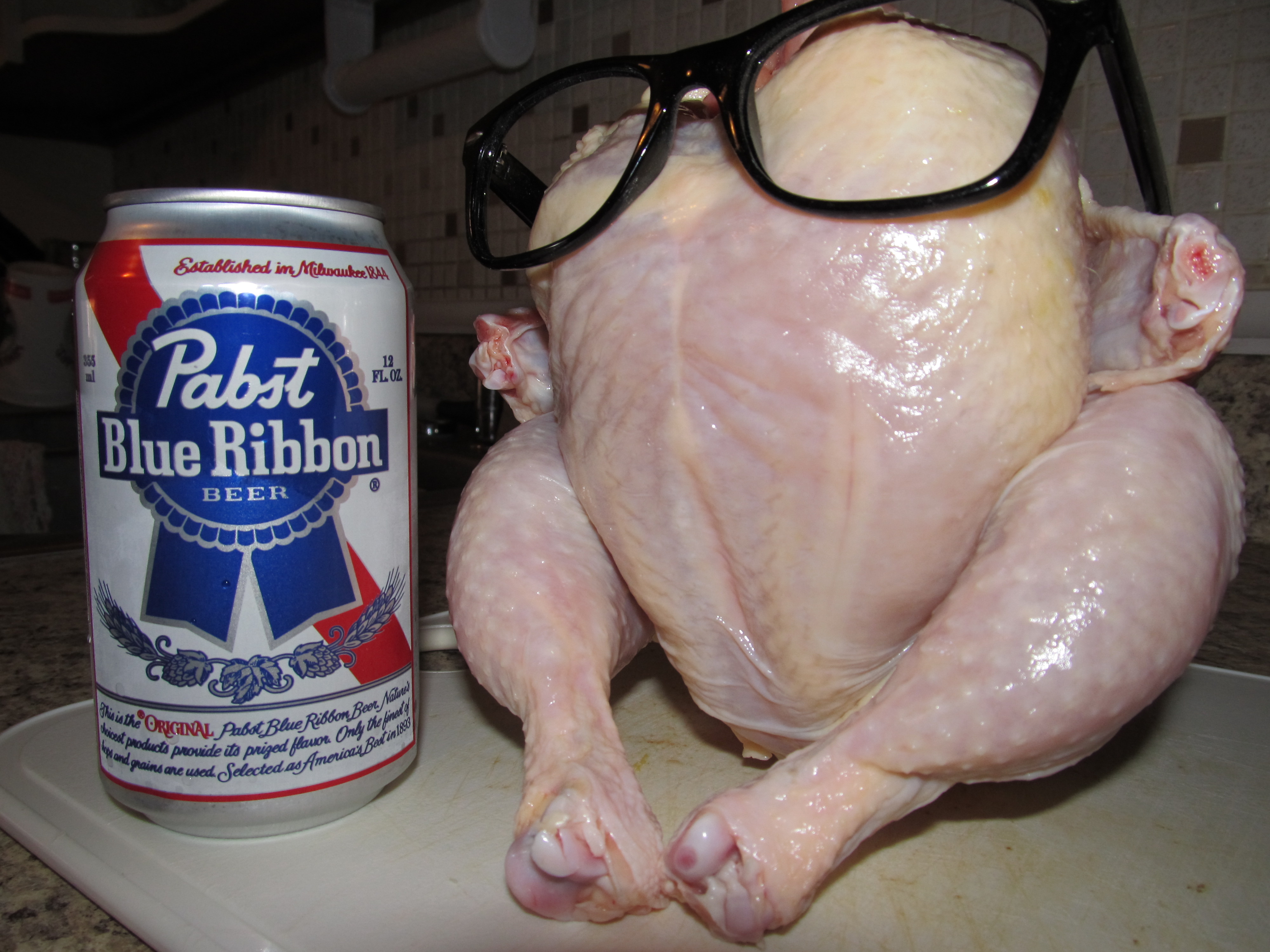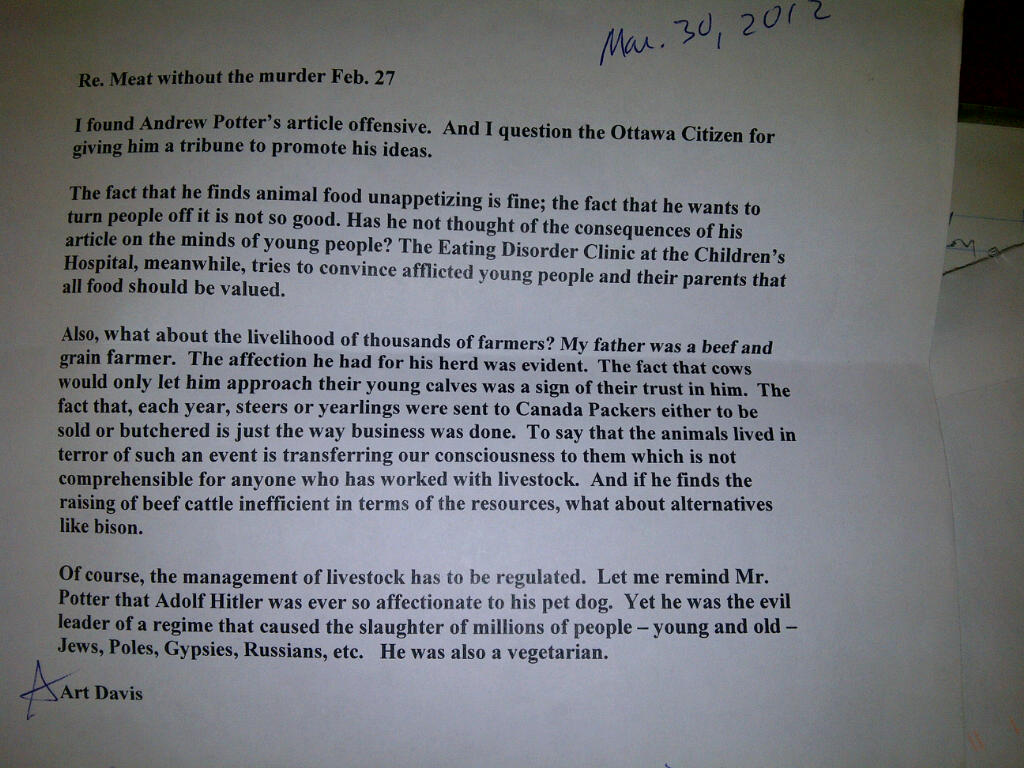In praise of vat-grown meat
 Monday, August 5, 2013 at 09:25PM
Monday, August 5, 2013 at 09:25PM The world's first lab-grown hamburger to come out of Mark Post's lab was taste tested today, and by all accounts it wasn't too bad at all. Some key points from the CBC's story:
- "The first (lab-made) meat products are going to be very exclusive," said Isha Datar, director of New Harvest, an international nonprofit that promotes meat alternatives. "These burgers won't be in Happy Meals before someone rich and famous is eating them."
- Sergey Brin, a co-founder of Google, announced that he funded the 250,000-euro ($330,000) project, saying he was motivated by a concern for animal welfare.
- Scientists agreed that improving the flavor probably won't be hard.
- The animal rights group PETA has thrown its support behind the lab-meat initiative.
You couldn't find a more perfect combination of private entrepreneurialism, X-Prize-style achievement, social welfare, and status seeking. I love the idea of vat grown meat. Here's a piece I wrote about the prospect of vat-grown meat a year and a half ago when Post announced that his team was getting close to a viable product. It was originally published in the Ottawa Citizen:
***
Meat without the murder
Monday, February 27, 2012
It's getting increasingly hard to find anything good to say about meat. It is expensive, swallowing huge tracts of land and tons of grain. It has a large carbon footprint. Finally, industrial meat production is hard on the animals, even before they're slaughtered. The operational slogan of PETA, the animal rights organization known for its radical politics and attention-grabbing stunts is "meat is murder." But you don't need to grapple with metaphysics of personhood to concede that for most people, eating animals involves a certain amount of deliberate denial about the circumstances under which meat is produced and how the animals are treated.
As things stand, we are largely divorced from the animal origins of our food - what we see in the supermarket are not animal parts, but flat white slabs of chicken, dark cubes of beef, rounded discs of lamb with convenient bone handles. The extreme end of this distancing is a proposal that was presented recently by André Ford, a student in the architecture department Royal College of Art in London. He has designed a sort of vertical biomechanical latticework into which lobotomized chickens could be plugged, with food, water and air delivered by a network of tubes, with excrement removed in the same manner.
If that sounds disturbingly like the Matrix for chickens, that's pretty much what Ford is proposing. But while this project is more shock art than industrial architecture, Ford makes an important philosophical point: "It is time we stopped using the term 'animal' when referring to the precursor of the meat that ends up on our plates. Animals are things we keep in our homes and watch on David Attenborough programs. 'Animals' bred for consumption are crops and agricultural products like any other."
If that strikes you as repulsive, perhaps that is because it forces us to confront the bad faith that permeates our debate over industrial meat production and consumption: If chickens are not "animals" (in the David Attenborough sense) then there is no real objection to something like Ford's proposal. But if they are animals, then perhaps we should stop eating them. At the very least, their capacity for fear, pain, and suffering is morally relevant to how we treat them.
But what if there was a technology that did away with all of these drawbacks, cutting through the moral bad faith while giving us a constant supply of low-cost, environmentally sustainable, and suffering-free meat products? That is, if we could grow meat in a vat, would there be any reasonable objection to eating it?
It's still a hypothetical question, but it won't be for long. At the American Academy for the Advancement of Science (AAAS) annual meeting in Vancouver last week, professor Mark Post of Maastricht University announced that his team is getting closer to a workable process for lab-grown meat. Their first successes were with pork, and by the end of this year they hope to to replicate the process with beef, giving them a product "that looks, feels and hopefully tastes like meat." Another scientist working on meat in a vat is Vladimir Mironov of the Medical University of South Carolina. Mironov envisions "football fieldsized buildings filled with large bioreactors, or bioreactors the size of a coffee machine in grocery stores" to produce this meat. "It will be functional, natural, designed food," he said. "How do you want it to taste? You want a little bit of fat, you want pork, you want lamb? We design exactly what you want. We can design texture."
The idea of custom-designed meat products opens up a whole new realm for interesting (and relatively harmless) experimentation and competition. You can imagine celebrity chefs designing their own special lines of meat textures and tastes; a well-designed "blend" could be sold for meatballs, or stews, or meat pies. Imagine the delights of a steak that was a mixture of lamb and venison, or - even better - polar bear and panda.
At the same time, invitro meat will suffer from all the drawbacks of everything else that is produced cheaply and for mass consumption - it will be "inauthentic." And so it will inevitably drive a more pernicious form of authenticity-mongering among people who will only eat meat grown "on the hoof." At the extreme, you can imagine private or invitation-only restaurants and supper-clubs opening up where certified on-the-hoof meat is provided to the privileged elite. The fact that it might be illegal would only add to the experience.
There is the ick factor, of course. Meat in a vat just sounds gross, even before you read that the Maastricht group's process requires stem cells from cows and calf serum as inputs. But we humans have a strong tendency to confuse esthetic reactions with moral judgments, and if you want to see something that is genuinely objectionable, as opposed to merely repellent, take a visit to your local abattoir.
Mironov's lab was shut down this month by the university over what it described as "human resources" issues. PETA has lobbied for him to continue his work, and is funding his research even though the U.S. government will not. This is telling, because PETA understands that the goal is not to micro-manage consumer preferences, it is to prevent harm to animals and to the environment. And if all of that is taken out of the equation, there's really not a lot to object to when it comes to eating meat.
 mark post,
mark post,  meat,
meat,  vat in
vat in  food,
food,  technology
technology 




